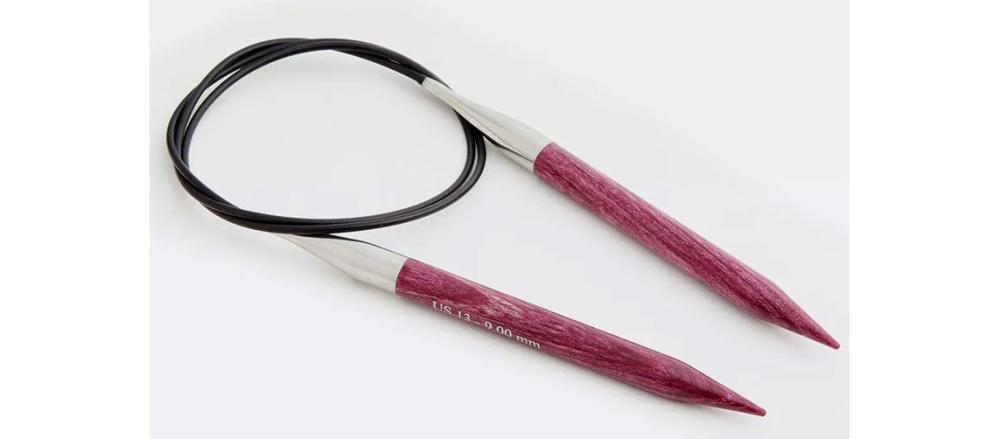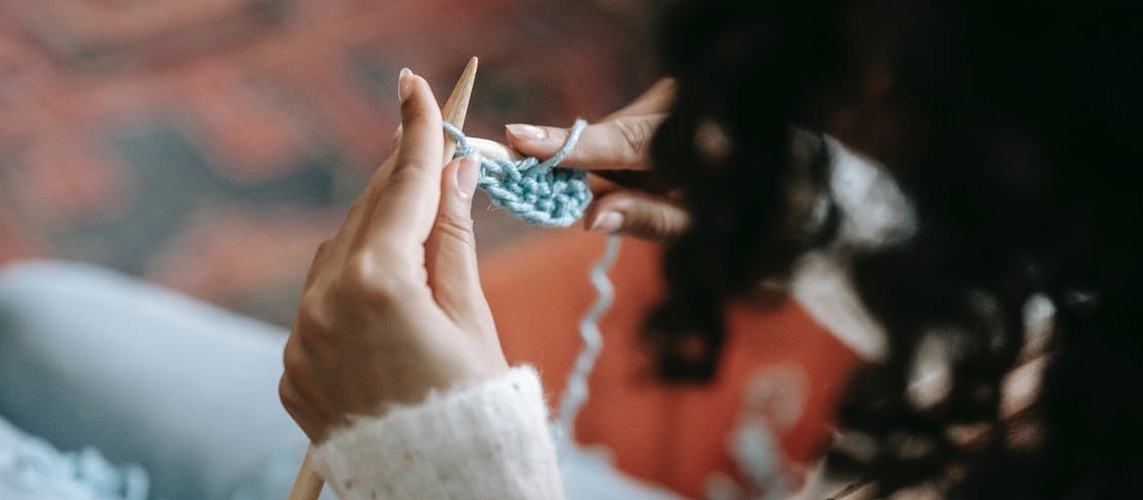Have you ever seen knitters wearing their yarn thread around their necks or on pins fastened to their chest? Most certainly, these were knitters crafting in the Portuguese style. Portuguese knitting is one of the oldest forms of knitting, though today there are not many knitters left who are familiar with this style.
Actually, this unique knitting style was not even born in Portugal, it was brought there through the Portuguese trade with the Persian world, where knitting had been invented already around 700 CE. Later, Portuguese and Spanish colonists brought this new technique to Southern America, whereas Northern European knitters adopted a different knitting style.
Portuguese knitting has many advantages. It is a fast and easy form to work with colours or stranded knitting, and it is said to be an especially good choice for people with joint pains and arthritis because of the little maneuvering of the hands needed to form the stitches. Also, knitting in the Portuguese style is supposed to be a great option for blind or visually impaired people, since the working yarn stays put and you can always find it easily.
So what is Portuguese Knitting exactly?
The holding of the needles is the same as in English or Continental knitting, but you tension the yarn around your neck or via a knitting pin on your left shoulder. Your working yarn comes from the left hand needle.
- Fasten the knitting pin onto your shirt close to your left shoulder.
- Wrap your working yarn onto the pin, with the skein or ball opposite the pin. If you don’t have one of these, instead, you can place the yarn around your neck.
- Wrap the left piece of yarn around your right middle finger.
On your right hand you hold the thread around your middle finger. The important difference is that the knitting action, i.e. the yarning over and pulling the loop through the stitch on the needle takes place in front of your knitting needle and not behind the needle.

What is a Portuguese knitting pin?
The Portuguese knitting pin is the secret behind the fast and easy movements in this knitting style which is so much easier on your finger tendons and wrists compared to the European or North American way of holding your yarn.
The Portuguese knitting pin rather looks like a mixture between an earring and a safety pin. You pin it to your shirt and secure the yarn thread. The distance between your body position and the yarn ball automatically creates sufficient tension to execute your knit or purl stitches. So easy.
How to knit in the Portuguese knitting style?
- You insert the right hand needle under the thread first, inserting the needle to knit just like you would in Continental knitting. Instead of inserting it behind the needle you do it in front of your left-hand needle.
- Now, you just use your left thumb to wrap the yarn around, and then move the right needle in a way that it scoops that stitch towards you. You do not have to move your hands in any way as just flicking your thumb a little.
- You will find this way of knitting particularly easy on your hands when it comes to purling. Instead of using knit stitches they just purl their project all the way through because when knitting in the Portuguese style, purls fly much smoother and with less effort under their fingers. With just a little experience you may find that you can advance much faster.
- Binding off in the Portuguese style is also a little bit different compared to English or Continental knitting. In order to bind off you are going to purl two stitches together. And when you end up with one stitch on the right-hand needle, you just slip that stitch to your left needle and are ready to finish the cast-off.
The Portuguese style of knitting is most handy when you are creating garter stitch garments or when knitting in the round on circular or double pointed needles. Ask any knitter from Portugal or Peru, and most of them tell you that they love the Portuguese style particularly for their circular knits.

If you are curious, why not try this ancient technique which has been passed on to generation after generation of knitters? See how it feels for your hands, and surprise yourself and your friends with mastering an additional knitting technique.
For a start, take a look at our free pattern of these beautiful garter stitch Court Jester slippers (pattern: courtesy of Drops Yarns). They are quickly crafted on a pair of single pointed needles and are great to gain a bit of practice in the Portuguese knitting style.
Please see our free pattern below, for which Drops Snow garn and 7 mm single pointed needles were used.
Gauge swatch:
12 sts x 24 rows in garter st = 10 x 10 cm [4’’ x 4’’].
This pattern is ideal to use up any scrap yarns. Important though to adhere to the knitting gauge. The diagonal of 1 square x 2 should result in the length of the slipper.
Shoe sizes:
UK: 3/4 - 5/6½ - 7½/9½
EU: 35/37- 38/40 – 42/44
Working back and forth on needle in squares, the yarn tails are used to sew squares together afterwards.
Cast on 10-11-12 sts on needle size 7 mm [US 10½] Work in garter stitch for 8.5-9-10 cm [3¼”-3½”-4”] (= square 1), change colour and work garter st for 8.5-9-10 cm [3¼”-3½”-4”] (= square 2). Continue like this working different colour squares alternately until you have 6 squares in total. If you are crafting the slipper in just two colours there should be three squares of each colour.
Your piece now measures 51-54-60 cm [20”-21¼”-23 5/8”], bind off. Now pick up 10-11-12 sts on the right side of square 2 with a different colour (= square 7), work 8.5 -9-10 cm [3¼”-3½”-4”] garter stitch, bind off.
Pick up 10-11-12 sts on the left side of square 6 with another colour (= square 8) and work like square 7.
Assembly: Fold slipper and sew together, edge to edge. The sole of the slipper = 24-26-28 cm [9½”-10 ¼”-11”]. Knit another slipper in the same way.
Crochet border: Crochet round the opening of each slipper with crochet hook size 8 mm [L/11] and colour of your choice as follows (beg mid back): * 1 sc, 2 ch *, repeat from *-*, and finish with 1 slip stitch in the first sc from the beginning of the round.












